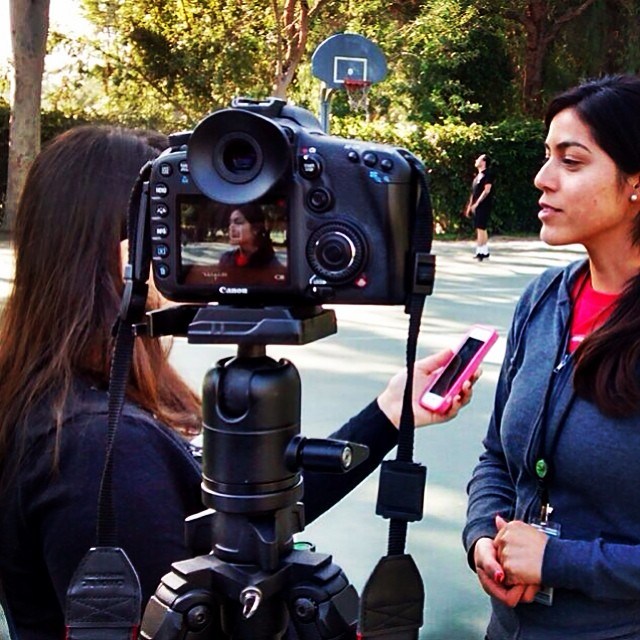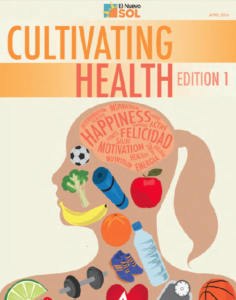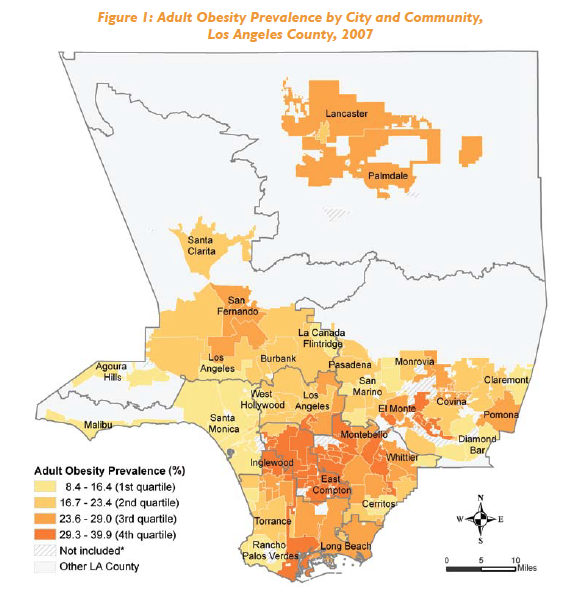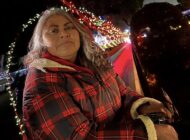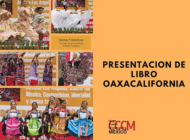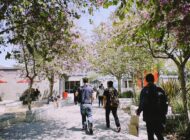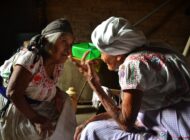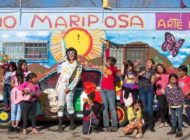By DAYANIS LÓPEZ-REYES and JOANNA JACOBO
EL NUEVO SOL
Cultivating Health is the first bilingual digital book that has been created by students in both journalism and graphic design departments at California State University Northridge (CSUN). This digital book documents, in a journalistic format, the journey of low-income residents of the Los Angeles County and their path in finding a healthier life through a free fitness program, 100 Citizens. It is via this assistance, promoted by select staff and students from CSUN’s Kinesiology Department, that hundreds of people have no now improved their health and the well-being of their families and their communities.
We put our own health and physical activity at the end of our list due to several factors—a busy pace of life, a bad economy, high levels of stress, busy personal schedules, long commuting hours, and an interminable number of other personal issues. The news media would makes us believe that the problem is only an individual problem, that every human being is solely responsible for taking care of their body, promote a healthy lifestyle, or simply see themselves deteriorate and weaken, ensuring the spread of a number of diseases that could become chronic and terminal.
A simple solution, right? Maybe for a person who earns an income that stands above the poverty level, or for someone who has enough free time, health insurance and lives in a community where easy access to healthy food and green spaces is a given.
However, the chances of this being available in low-income communities in Los Angeles are slim to none; many of these areas are inhabited predominantly by people who speak Spanish and therefore lack reliable information regarding their health. For these communities, the gyms are a luxury expenditure. A simple example is the cost of a monthly family membership to YMCA: about 90 dollars per month. Families would have to decide whether to buy food or pay rent in order to be able to strip off the extra price for a gym that may not even be near their home. This is particularly true for 18 percent of residents of the Los Angeles County living below the poverty level, according to figures from the Census Bureau.
The creation of 100 Citizens offers a solution for a systemic problem for low-income residents that inhabit the most populous county in the United States. The goal of this program is not only to help individuals lose weights, but also to promote a healthy lifestyle in all aspects of life: prevent diseases such as diabetes type 2, hypertension, heart diseases and other illnesses caused by overweight and lack of physical activity.
In 2011, the Los Angeles Public Health Department published the article, “Obesity and Related Mortality in Los Angeles County,” which says that the “adult obesity prevalence varied considerably across cities and communities, with the lowest in San Marino (8.4 percent) and the highest in East Compton (39.9 percent). The article demonstrates how higher obesity prevalence is generally found in cities and communities with greater economic hardship. Although areas with high adult obesity rates appeared to concentrate in certain geographic locations, the prevalence of obesity sometimes varied greatly among different cities in the same Service Planning Area.”
California has the largest number of people in the country who have been recently diagnosed with diabetes, according to a report by the Diabetes Coalition of California (DCC)—a group formed by individuals and organizations devoted to the prevention, recognition, and reduction of the adverse personal and public impact of diabetes in the state’s diverse communities. In 2007, almost 18 million (29 percent, or nearly 1 in 3 adults) in California were pre-diabetic, a condition that often culminates in type 2 diabetes.
Furthermore, the same report adds that in California, the average annual cost for the care and treatment of diabetes is more than 24 billion dollars a year.
A survey conducted by The Pew Research Center in 2006 reported that “75 percent of the respondents say that they are not getting enough exercise and 50 percent say they are overweight because of the kind of foods they find at the grocery stores or restaurants.”
This digital book wants to put a human face to the health problem of physical inactivity by documenting stories of some of the participants of 100 citizens, helping bilingual communities in Los Angeles and the country learn more about a program that offers a low cost solution to a systemic problem. Currently, this program is carried out in four public parks in the cities of San Fernando, Sylmar, La Crescenta, and Canoga Park.
Under the leadership of Steven Loy, creator of the program and professor of kinesiology at CSUN, the program has seen an increase not only in participants and instructors, but also in the number of parks involved: from one at the beginning in the summer of 2013 to four in the spring of 2015.
The participants’ goals is to lose 5 to 7 percent of their initial weight before they start doing the program, which is conducted for 12 weeks beginning every spring semester. Likewise, CSUN college students, many of them members of these communities, have contributed their expertise and time to help improve the health of low-income community’s public: cultivating health. Their fitness knowledge, their capacity of leadership and their passion are providing a solution to the health problems of the city.
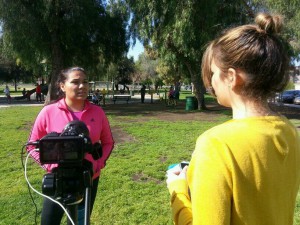
Laura Camelo interviews on the “100 Citizens” participant at San Fernando Park. Foto Karen Melinè Guzelian /El Nuevo Sol
Aside from the personal advantage that participants receive, students who partake in the program as instructors also benefit as they earn hours of hands-on experience while taking on the tasks that engulf their profession, kinesiology, by helping others in their community. This therefore encourages the creation of jobs that will give these kinesiology professionals employment in public parks and departments of health, working with people who need their knowledge and helping solve a problem that affects California and the nation.
This book has collected testimonies that show several participants and student-instructors of 100 citizens on how this programs has changed their lives, serving as proof that in order to be healthy, stay active and promote appropriate nutrition in a low-income community is not an other-worldly concept, but is one that must be fought for in conjunction, collaboration from all individuals that are able to contribute to their society.
For over a year, students of the Spanish-language journalism program at CSUN have collected stories and statistical information to create the first volume of Cultivating Health, in the hopes that this documentation serves as a starting guide for other communities to take action and promote a more dignified way of living.
Let’s get moving!
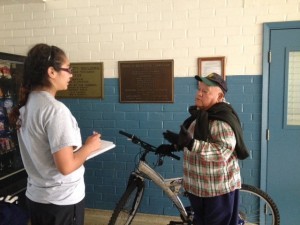
Journalism student Zulay Saldaña interviews 100 Citizens participant José Montelongo. Photo: Joanna Jacobo / El Nuevo Sol.
Tags: #100CitizensCSUN 100 Citizens 100 Ciudadanos City of San Fernando CSUN CSUN Kinesiology El Nuevo Sol Estudiantes health Los Angeles San Fernando






